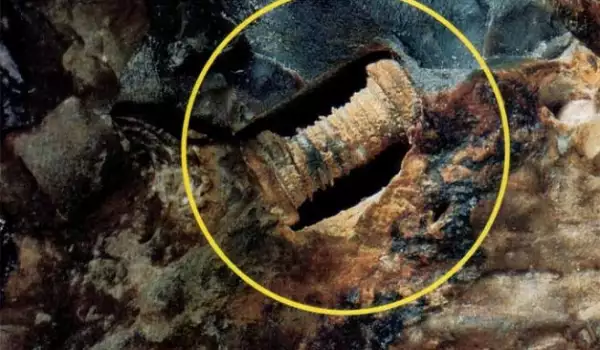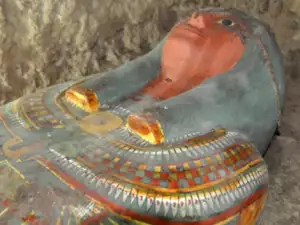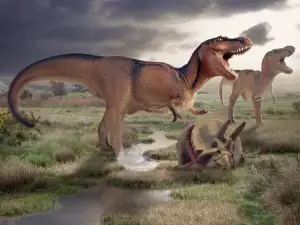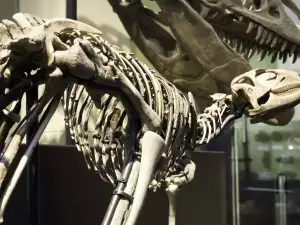Archaeology was once a science of the nobles. In the past, only the wealthiest individuals possessed enough free time to dig around the mysteries of our predecessors. Some of its most interesting finds seem to challenge Darwin's theory.
The more artifacts archaeologists uncover, the greater the enigmas they pose to mankind. Some of the mystery-shrouded discoveries have been so sensational and unexplainable that scientists have simply opted for not sharing them with the world, choosing not to risk both their name and career.
Certain unusual archaeological finds have led to the idea that a number of different civilizations once existed on Earth. Some are even proof that Charles Darwin's theory of evolution is fundamentally flawed.
1. The Screw from Kaluga Oblast, Russia

The object was uncovered relatively recently in Kaluga Oblast, Russia. Archaeologists came across a small stone of unusual shape. After cleaning it, they found a screw about 1/2″ (1 cm) long embedded in it. Since it was inside the stone, it means it ended up there when the formation was still soft soil. Paleontologists' analyses revealed that the age of the rock was 300-320 million years old. In that time span, the atoms of the metal had the opportunity to leech deep into the rock, while their place was taken by its silicon atoms in turn. The result - an oval metal cocoon that's clearly distinguishable.
What followed was a series of analyses - paleontological, zoological, physico-technical and aviation-technical. The results were conclusive: the screw had ended up in the rock before it hardened. In other words, a metal screw with a thread fell to the bottom of the ancient ocean 300 million years ago (before even the appearance of the dinosaurs) and lay firmly embedded in the sedimentary rock. No one has of yet been able to explain who had been polluting the ocean with screws in the Devonian period of the Paleozoic.
2. The Golden Chain from Ontario
Another relic of roughly the same age was discovered in June 1844 in a quarry near the town of Tweed in the Canadian province of Ontario. It was an elegant gold chain. The necklace was uncovered at a depth of about 8 ft (2.4 m) below ground. The rock is 320-360 million years old, a period in which humans supposedly did not yet exist.
3. The Golden Chain from Illinois
Another gold chain was found on July 11, 1891, near the town of Morrisonville, Illinois in a coal mine. By its design it was obvious that it was crafted by an experienced jeweler. It was 4″ (10 cm) long and weighed 6.7 oz (192 g). The Illinois State Geological Survey concluded that the chain was 260-320 million years old, stirring up many more questions.
4. Human skeletons
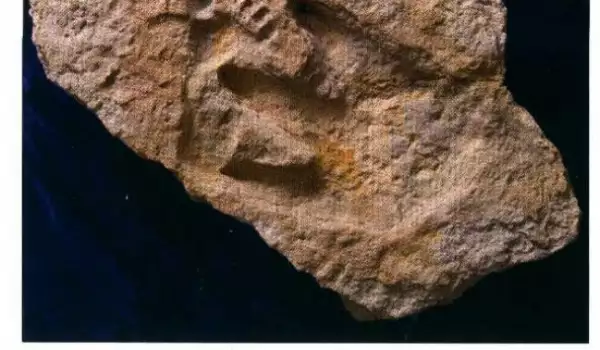
Darwin's chronology has also been partly challenged by human skeletons found in hard blocks of volcanic rock in France and Denmark in 1840. The age of the rocks and bones were dated to 2 million years old. The preserved skulls were found to be identical to those of modern man - which doesn't match the chronology Darwinian proponents argue for. The theory remains unchanged even today - Homo sapiens developed from a very special monkey 100 000 years ago and that's the end of it.
5. The Footprints from Tanzania
In 1979, archaeologists in Tanzania discovered tracks of human feet identical to those of modern man. The prints had been made there about 4 million years ago - something which stands at odds with Darwinian theory. To cover up the situation, the most venerated anthropologists at the time explained that monkeys simply walked with the thumbs of their toes upward. Basically what they were saying was that the animals folded up their toes and that was why their tracks looked like modern humans'.
6. Tracks of Humans Alongside Dinosaurs`
A human footprint alongside a three-fingered footprint similar to a dinosaur's was found in 1983 by Russian scientists in Turkmenistan. The tracks are 15 million years old.
In the state of Texas, US, finding human footprints alongside three-fingered dino prints is a common occurrence.
However, Darwin's theory remains unchanged and continues to be accepted as pure truth. The missing link remains missing, while the idea of humans existing even before the dinosaurs is easily disregarded.
